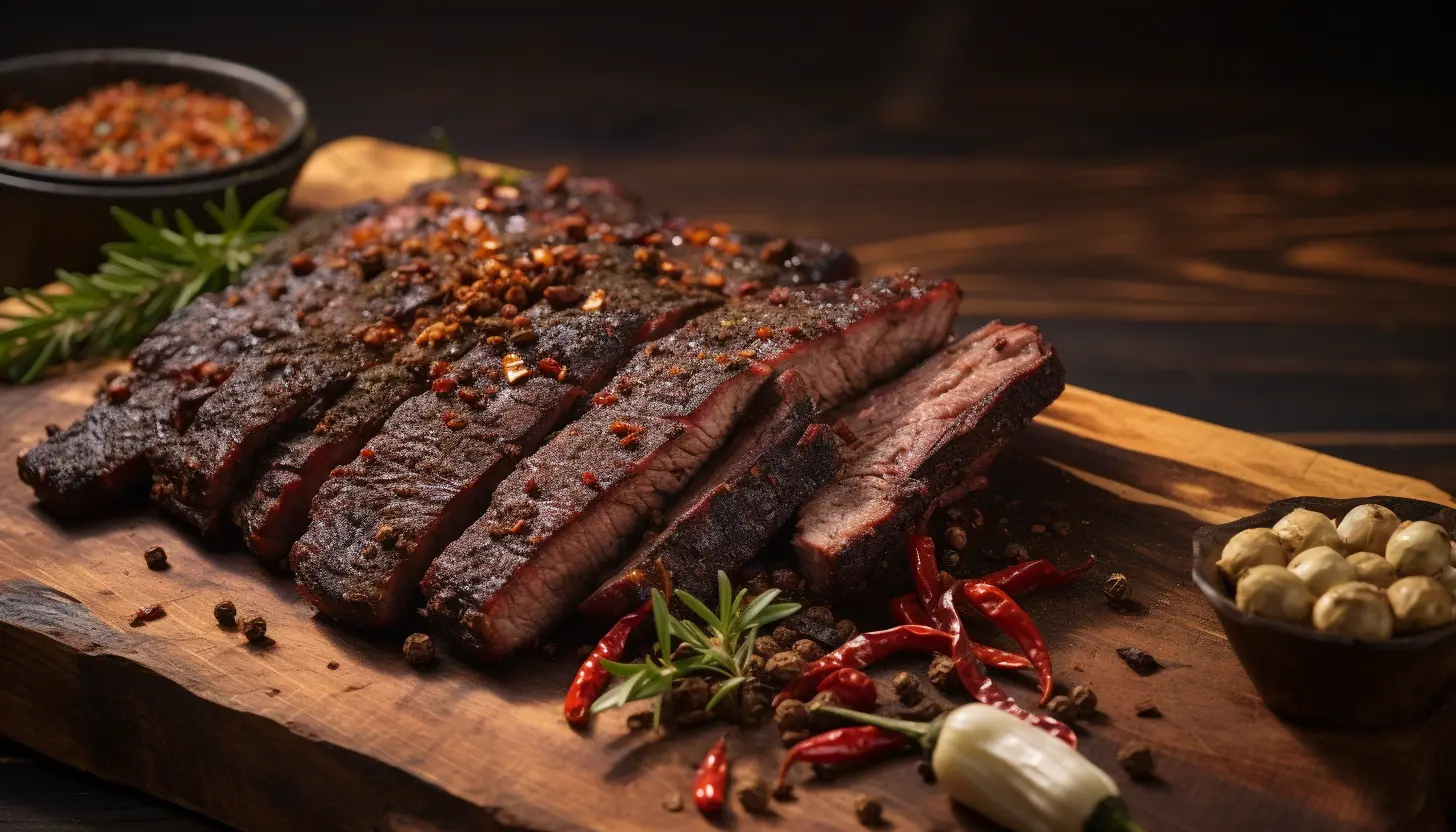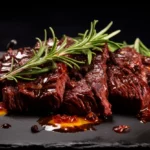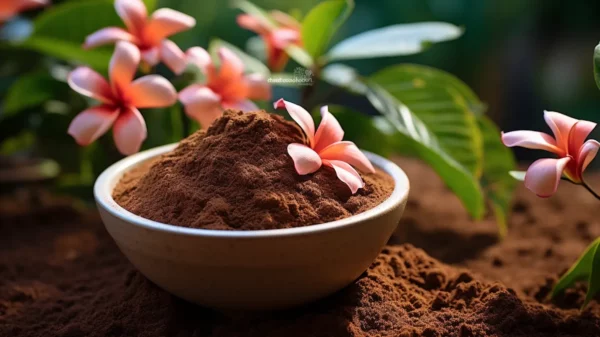Brisket rubs are a fundamental component of the barbecue world, elevating the flavor profile of this beloved cut of meat. In this section, we will explore what exactly a brisket rub is, its importance in the cooking process, and how it enhances the overall taste and texture of the brisket.
What is a Brisket Rub?
A brisket rub is a mixture of spices, herbs, sweeteners, and savory ingredients that is applied to the surface of the brisket before it is cooked. This flavorful blend acts as a seasoning, imparting a delicious taste and aroma to the meat. The rub not only enhances the flavor of the brisket but also creates a beautiful crust, known as the bark, during the smoking or grilling process.
The ingredients in a rub can vary widely, allowing for endless possibilities in terms of flavor profiles. From bold and spicy to sweet and savory, a well-crafted rub can transform a simple brisket into a culinary masterpiece.
The Importance of Using a Brisket Rub
Using a brisket rub is essential for several reasons. First and foremost, it adds layers of flavor to the meat. The combination of spices, herbs, and other ingredients in the rub enhances the natural taste of the brisket, creating a depth of flavor that is sure to impress. Whether you prefer a smoky and robust profile or a sweet and tangy sensation, the rub serves as the foundation for achieving your desired taste.
Additionally, the rub plays a crucial role in developing the bark on the brisket. As the meat slow-cooks, the rub interacts with the heat, smoke, and rendered fat, creating a caramelized and flavorful crust on the surface. This bark not only adds texture but also intensifies the overall taste experience.
Moreover, a well-applied brisket rub can help to seal in the moisture of the meat, resulting in a juicy and tender final product. The rub acts as a barrier, preventing the natural juices from escaping during the cooking process, leading to a more succulent and flavorful brisket.
Enhancing Flavor with Brisket Rubs
The selection of ingredients in a brisket rub is key to achieving the desired flavor profile. Spices and herbs are the building blocks of the rub, providing a range of tastes and aromas. Common spices used in brisket rubs include paprika, chili powder, cumin, garlic powder, and onion powder. These ingredients add depth, complexity, and a touch of heat to the rub.
Sweeteners, such as brown sugar, honey, or maple syrup, are often incorporated into the rub to balance out the savory elements and add a touch of sweetness. The sugars in the rub also aid in the formation of the coveted bark on the brisket, contributing to its appealing appearance and taste.
Savory elements, like salt, garlic powder, onion powder, and other herbs, bring out the natural flavors of the brisket and help to create a well-rounded taste profile. Salt, in particular, is crucial for seasoning the meat and enhancing its overall taste.
In the upcoming sections, we will explore the specific spices, herbs, sweeteners, and savory elements commonly used in brisket rubs. By understanding the role of each ingredient, you will be equipped with the knowledge to create your own personalized rub or experiment with existing recipes.
Understanding the Key Ingredients in a Brisket Rub
To create a delicious and well-balanced brisket rub, it is essential to have a good understanding of the key ingredients used. In this section, we will explore the common spices, herbs, sweeteners, and savory elements that contribute to the flavor profile of a brisket rub. By delving into the characteristics of each ingredient, you will gain insights into how they interact and complement each other, allowing you to create a rub that suits your personal taste preferences.
Common Spices and Herbs Used in Brisket Rubs
Spices and herbs are the backbone of any brisket rub, providing the foundation of flavor. Here are some commonly used spices and herbs in brisket rubs:
- Paprika: This versatile spice adds a rich, smoky flavor and imparts a vibrant red hue to the rub. It is available in different varieties, such as sweet, smoked, or hot, allowing you to tailor the level of heat to your liking.
- Chili Powder: Chili powder adds a robust and spicy kick to the rub. It is made from dried and ground chili peppers, often combined with other spices like cumin, garlic powder, and oregano.
- Cumin: Cumin has a warm and earthy flavor that complements the smokiness of the brisket. It adds depth and complexity to the rub, enhancing the overall taste.
- Garlic Powder: Garlic powder brings a savory and aromatic element to the rub. It provides a subtle garlic flavor without the pungency of fresh garlic, ensuring a well-balanced seasoning.
- Onion Powder: Similar to garlic powder, onion powder adds a savory note to the rub. It imparts a mild onion flavor that enhances the overall taste profile.
These are just a few examples of the many spices and herbs used in brisket rubs. Experimenting with different combinations and ratios can help you discover unique flavor profiles.
Sweeteners and Sugars in Brisket Rubs
Sweeteners and sugars play an important role in balancing the flavors of a brisket rub and contributing to the formation of a flavorful bark. Here are some common sweeteners used:
- Brown Sugar: Brown sugar adds a rich, caramel-like sweetness to the rub. It also helps in achieving a beautiful caramelization on the surface of the brisket during cooking.
- Honey: Honey provides a natural sweetness and a touch of floral flavor to the rub. It can also contribute to the development of a glossy and sticky bark.
- Maple Syrup: Maple syrup adds a unique sweetness and a hint of smokiness to the rub. It pairs particularly well with the flavors of smoked meats.
The choice of sweetener depends on personal preference and the desired flavor profile. Some prefer a sweeter rub, while others may opt for a more subtle sweetness.
Salt and Savory Elements in Brisket Rubs
Salt is a crucial ingredient in any brisket rub as it not only enhances the overall flavor but also helps to season the meat. It draws out moisture from the brisket, resulting in a more concentrated taste and a tender texture. Kosher salt or coarse sea salt is commonly used due to its larger grain size, which allows for better control of the seasoning.
Savory elements such as garlic powder, onion powder, and other herbs like thyme or rosemary can be included to add complexity and depth to the rub. These ingredients provide savory notes that complement the natural flavors of the brisket.
Understanding the role of each ingredient in a brisket rub allows you to tailor the flavors to your liking. By experimenting with different combinations and ratios, you can create a rub that perfectly suits your taste preferences and elevates the flavor of your brisket.
Exploring Different Brisket Rub Recipes
In this section, we will embark on a culinary journey, exploring different brisket rub recipes influenced by regional barbecue styles. Each style has its own unique flavor profile, allowing you to experiment and find the rub that suits your taste preferences. Whether you prefer the bold and robust flavors of Texas, the sweet and tangy notes of Kansas City, or the harmonious blend found in Memphis-style barbecue, we have you covered with a range of delicious recipes to try.
Classic Texas-Style Brisket Rub Recipe
Texas is renowned for its love of beef and its traditional approach to barbecue. A classic Texas-style brisket rub typically consists of a combination of spices and herbs that enhance the natural flavors of the meat. Here’s a simple and authentic Texas-style rub recipe:
Ingredients:
- 2 tablespoons paprika
- 1 tablespoon chili powder
- 1 tablespoon ground black pepper
- 1 tablespoon kosher salt
- 1 tablespoon garlic powder
- 1 tablespoon onion powder
- 1 teaspoon cayenne pepper (optional, for heat)
Instructions:
- In a bowl, combine all the ingredients until well blended.
- Generously coat both sides of the brisket with the rub, gently pressing it into the meat.
- Let the brisket rest in the refrigerator for at least 1 hour or overnight to allow the flavors to penetrate the meat.
- Proceed with your preferred cooking method, whether it’s smoking, grilling, or using an oven.
This classic Texas-style rub is versatile and can be adjusted to suit your personal taste. Feel free to experiment with the spice ratios or add additional ingredients to customize the flavor profile.
Kansas City-Style Brisket Rub Recipe
If you’re a fan of the sweet and tangy flavors synonymous with Kansas City barbecue, this rub recipe is sure to satisfy your taste buds. Kansas City-style rubs often feature the addition of sweeteners to create a delicious caramelized crust on the brisket. Here’s a recipe for a Kansas City-style rub:
Ingredients:
- 2 tablespoons brown sugar
- 1 tablespoon paprika
- 1 tablespoon chili powder
- 1 tablespoon kosher salt
- 1 tablespoon garlic powder
- 1 tablespoon onion powder
- 1 teaspoon black pepper
- 1 teaspoon dry mustard
- 1/2 teaspoon cayenne pepper (optional, for heat)
Instructions:
- In a bowl, combine all the ingredients until well mixed.
- Apply the rub generously to both sides of the brisket, ensuring an even coating.
- Allow the brisket to rest in the refrigerator for at least 1 hour to allow the flavors to meld.
- Proceed with your preferred cooking method, such as smoking or slow-roasting.
This Kansas City-style rub strikes a balance between sweet and savory, creating a delectable bark on the brisket. Adjust the sweetness or heat level according to your taste preferences.
Memphis-Style Brisket Rub Recipe
Memphis-style barbecue is known for its well-balanced flavor profile, combining sweet, savory, and a hint of heat. If you enjoy a harmonious blend of flavors, try this Memphis-style rub recipe:
Ingredients:
- 2 tablespoons paprika
- 1 tablespoon brown sugar
- 1 tablespoon chili powder
- 1 tablespoon kosher salt
- 1 tablespoon garlic powder
- 1 tablespoon onion powder
- 1 teaspoon black pepper
- 1/2 teaspoon cayenne pepper (adjust according to heat preference)
Instructions:
- In a bowl, combine all the ingredients and mix well.
- Apply the rub generously to both sides of the brisket, ensuring even coverage.
- Let the brisket sit in the refrigerator for at least 1 hour to allow the flavors to meld together.
- Proceed with your preferred cooking method, such as smoking or slow-cooking.
This Memphis-style rub offers a well-rounded combination of flavors, with the sweetness of brown sugar, the earthiness of paprika, and a touch of heat. Feel free to tailor the spice levels to suit your taste.
These rub recipes serve as a starting point for your barbecue adventures. Don’t be afraid to experiment and adjust the ingredients to create your own signature rub. The key is to find the balance of flavors that brings you the most enjoyment and satisfaction when indulging in a mouthwatering brisket.
Tips and Techniques for Applying Brisket Rubs
Applying the brisket rub correctly is just as important as selecting the right ingredients. In this section, we will explore some essential tips and techniques to ensure that your brisket is perfectly seasoned and the flavors are evenly distributed.
Preparing the Brisket for Rub Application
Before applying the rub, it is crucial to prepare the brisket properly. Here are some key steps to follow:
- Trim Excess Fat: Trim any excess fat from the brisket, leaving a thin layer for flavor and moisture. This allows the rub to come into direct contact with the meat, ensuring better adherence and flavor absorption.
- Remove Silver Skin: Silver skin is a tough connective tissue found on the surface of the brisket. It is best to remove this membrane as it can prevent the rub from penetrating the meat. Use a sharp knife or a boning knife to carefully remove the silver skin.
By properly preparing the brisket, you create a clean canvas for the rub and ensure that it adheres evenly to the meat.
Applying the Rub to the Brisket
Once the brisket is prepared, it’s time to apply the rub. Follow these steps for even coverage:
- Generously Coat the Brisket: Sprinkle the rub generously over the entire surface of the brisket. Make sure to cover all sides, including the top, bottom, and sides. The rub will adhere better if the brisket is slightly moist, so consider lightly spritzing the meat with water or applying a thin layer of mustard beforehand.
- Gently Massage the Rub: Use your hands to gently press the rub into the surface of the brisket. This helps the flavors penetrate the meat and promotes even distribution. Avoid applying too much pressure, as this can cause the rub to clump or become uneven.
- Let the Rub Rest: Once the rub is applied, allow the brisket to rest at room temperature for 30 minutes to an hour. This resting period allows the flavors to meld and the rub to adhere to the meat more effectively.
By following these steps, you ensure that the brisket is evenly coated with the rub, promoting optimal flavor absorption throughout the cooking process.
Resting and Marinating Time for the Rub
After applying the rub, it is essential to allow the brisket to rest and marinate. This resting period allows the flavors to develop and infuse into the meat. Here are some key considerations:
- Refrigeration and Storage: If you’re not cooking the brisket immediately after applying the rub, it’s crucial to refrigerate it. Place the brisket in an airtight container or wrap it tightly in plastic wrap to prevent any cross-contamination or drying out. The brisket can be refrigerated for up to 24 hours before cooking.
- Resting Time: Once the brisket is ready to be cooked, it is recommended to let it rest at room temperature for 30 minutes to an hour. This resting period allows the meat to come to an even temperature, ensuring more consistent cooking.
By allowing the rub to rest and marinate, you give the flavors time to permeate the meat, resulting in a more flavorful and tender brisket.
Additional Tips for Perfecting Brisket Rubs
Here are a few extra tips to help you achieve the best results with your brisket rub:
- Keep Notes: As you experiment with different rubs and cooking techniques, make sure to keep notes of the combinations and ratios that you enjoy. This will serve as a reference for future cooks and allow you to replicate your successes.
- Pairing with Barbecue Sauce: Consider pairing your brisket rub with a complementary barbecue sauce. The rub forms the foundation of flavor, while the sauce adds an extra layer of richness and tanginess. Experiment with different sauce options to find the perfect match for your rub.
- Personalize and Experiment: Don’t be afraid to customize your rub by adding or adjusting ingredients to suit your taste preferences. The beauty of brisket rubs lies in the freedom to experiment and create your own unique flavor profiles.
By following these tips and techniques, you’ll be well on your way to achieving a perfectly seasoned and flavorful brisket that will impress your family and friends.
Conclusion and Final Thoughts
In this comprehensive guide, we have explored the world of brisket rubs and the importance of selecting the right ingredients to enhance the flavor of this beloved cut of meat. We have delved into the origins and evolution of brisket rubs, understanding the key spices, herbs, sweeteners, and savory elements that contribute to their flavor profiles. Additionally, we have provided you with a range of delicious brisket rub recipes influenced by regional barbecue styles such as Texas, Kansas City, and Memphis.
The art of creating the perfect brisket rub goes beyond simply following a recipe. It is a journey of experimentation and personalization, allowing you to tailor the flavors to suit your taste preferences. As you embark on your own barbecue adventures, remember to keep notes of successful rub combinations and adjust them to create your own signature rub.
Applying the brisket rub correctly is equally important as selecting the ingredients. Properly preparing the brisket by trimming excess fat and removing silver skin ensures better adherence and flavor absorption. Applying the rub generously and massaging it into the meat promotes even distribution of flavors. Allowing the rub to rest and marinate allows the flavors to meld and penetrate the meat, resulting in a more flavorful and tender brisket.
Remember that the enjoyment of creating and perfecting brisket rubs goes hand in hand with the joy of sharing and savoring the final results. Whether you’re hosting a barbecue gathering or simply enjoying a meal with your loved ones, the flavorful, tender, and perfectly seasoned brisket will be the star of the show.
So, embrace the art of brisket rubs, experiment with different ingredients, and let your creativity shine. With each cook, you will continue to refine your technique, discovering new flavor combinations and techniques that take your brisket to new heights.
In conclusion, creating a tantalizing brisket rub requires a balance of flavors, an understanding of key ingredients, and a willingness to experiment. By following the tips, techniques, and recipes provided in this guide, you will be well-equipped to create mouthwatering and memorable briskets that will leave everyone craving for more.
Now, it’s time to fire up the grill or smoker, gather your family and friends, and enjoy the fruits of your labor. Happy barbecuing!










